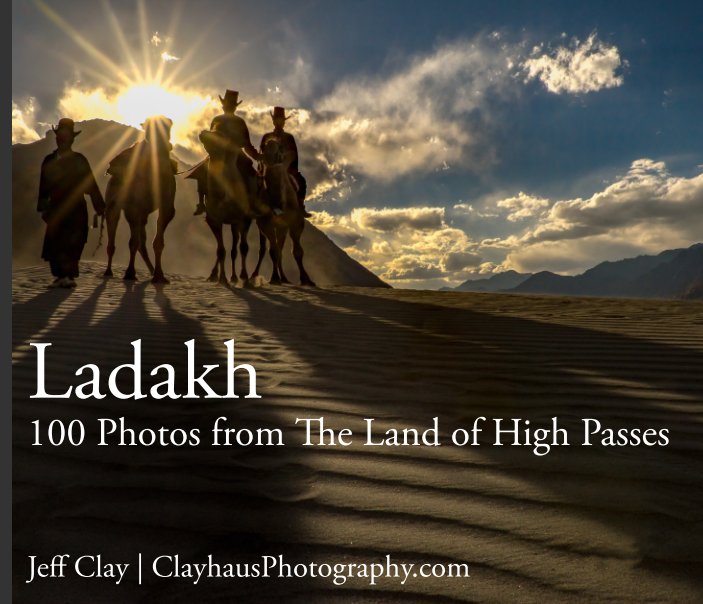Ladakh
100 Photos from The Land of High Passes
von Jeff Clay
Dies ist der Preis, den Ihre Kunden sehen. Listenpreis bearbeiten
Über das Buch
Ladakh -- the land of high passes – is nestled somewhat cozily and sometimes somewhat uncomfortably between Pakistan, Chinese controlled Tibet, and the fellow Indian region of Kashmir. I remember when wars with both Pakistan and China were fought with the most recent being in 1999. Politically part of the Indian state of Jammu and Kashmir, Ladakh was only opened up to tourism in 1974. Three hundred tourists – mainly Indian – came that year. Now over 300,000 tourists visit the region, again, most being Indian.
Ladakh sits in the rain shadow of the Himalaya Mountains and so appears at first glance to be a high altitude desert. High it is with its “capital” of Leh being around 11,500’ high. Most of the trip was spent at or above 10,000’ and the highest elevation gaspingly reached was the Chang La pass at 17,590’. Dry Ladakh is too though the mighty Indus River flows its length and is fed by many tributaries. Some valleys are quite fertile with fields of green contrasting with the grey and dun stony mountains rising all around. It was harvest time and the golden yellow fields of barley also presented visual relief from the usually austere landscape.
Since the opening of Ladakh, much modern pressure has come to bear upon the Ladakhi people. For many people life has become easier but the cost can be high: loss of traditions, alienation, crime, ethnic strife, poverty, and an upending of value systems. This is a common modern refrain, no matter where I travel.
Selecting 100 images out of the thousands I took was a formidable task. I focused mainly on the people often in their natural surroundings. Hopefully, this visual travelogue will captivate your interest, pique your curiosity, and perhaps even compel you to make your own journey to the land of high passes.
Ladakh sits in the rain shadow of the Himalaya Mountains and so appears at first glance to be a high altitude desert. High it is with its “capital” of Leh being around 11,500’ high. Most of the trip was spent at or above 10,000’ and the highest elevation gaspingly reached was the Chang La pass at 17,590’. Dry Ladakh is too though the mighty Indus River flows its length and is fed by many tributaries. Some valleys are quite fertile with fields of green contrasting with the grey and dun stony mountains rising all around. It was harvest time and the golden yellow fields of barley also presented visual relief from the usually austere landscape.
Since the opening of Ladakh, much modern pressure has come to bear upon the Ladakhi people. For many people life has become easier but the cost can be high: loss of traditions, alienation, crime, ethnic strife, poverty, and an upending of value systems. This is a common modern refrain, no matter where I travel.
Selecting 100 images out of the thousands I took was a formidable task. I focused mainly on the people often in their natural surroundings. Hopefully, this visual travelogue will captivate your interest, pique your curiosity, and perhaps even compel you to make your own journey to the land of high passes.
Autorenwebsite
Eigenschaften und Details
- Hauptkategorie: Reisen
-
Projektoption: Standard-Querformat, 25×20 cm
Seitenanzahl: 102 - Veröffentlichungsdatum: Jan. 30, 2019
- Sprache English
- Schlüsselwörter travel, photography, ladakh, india, landscape
Mehr anzeigen


